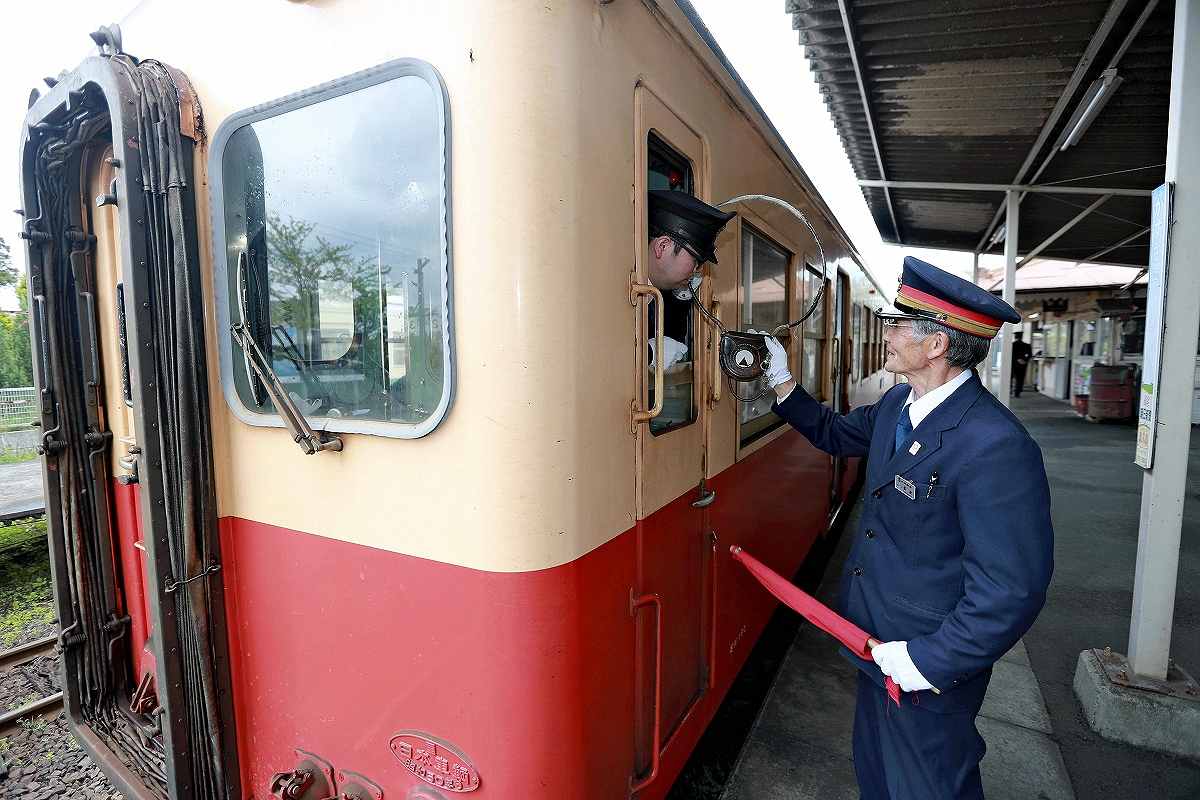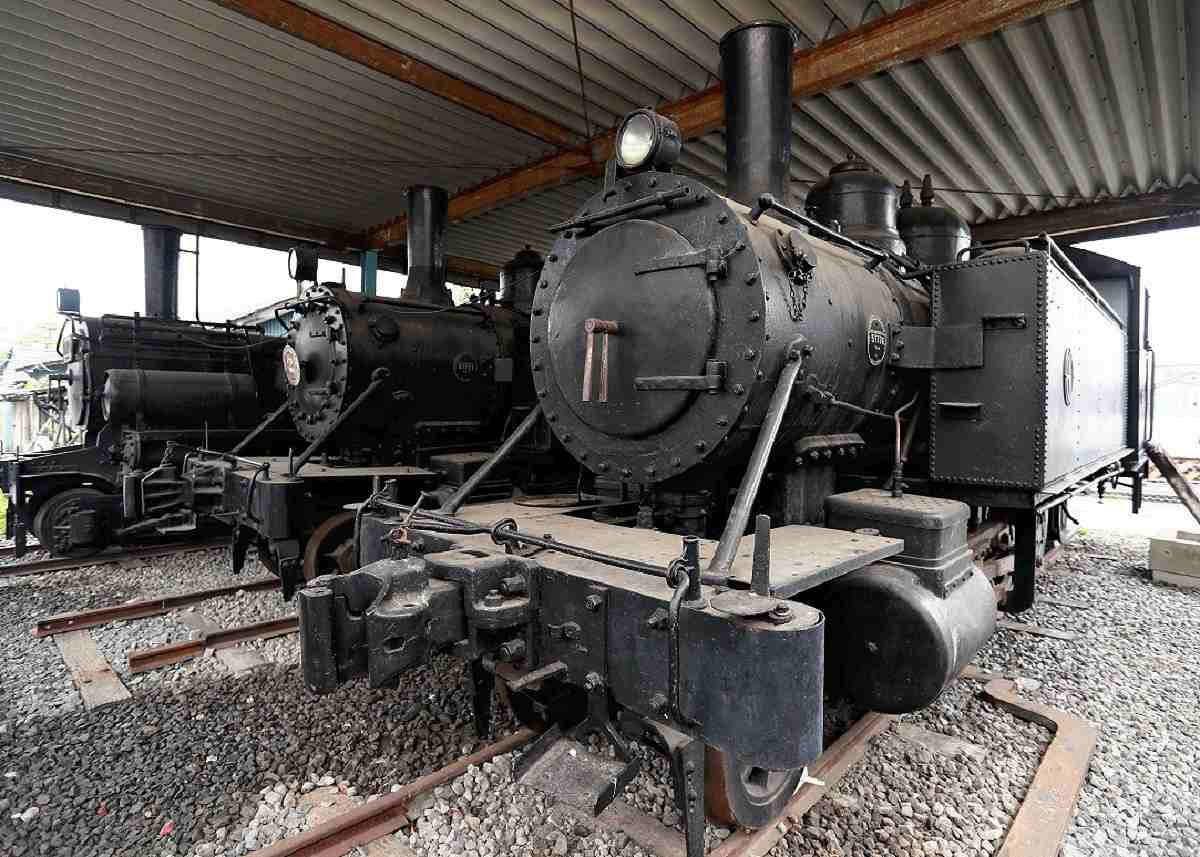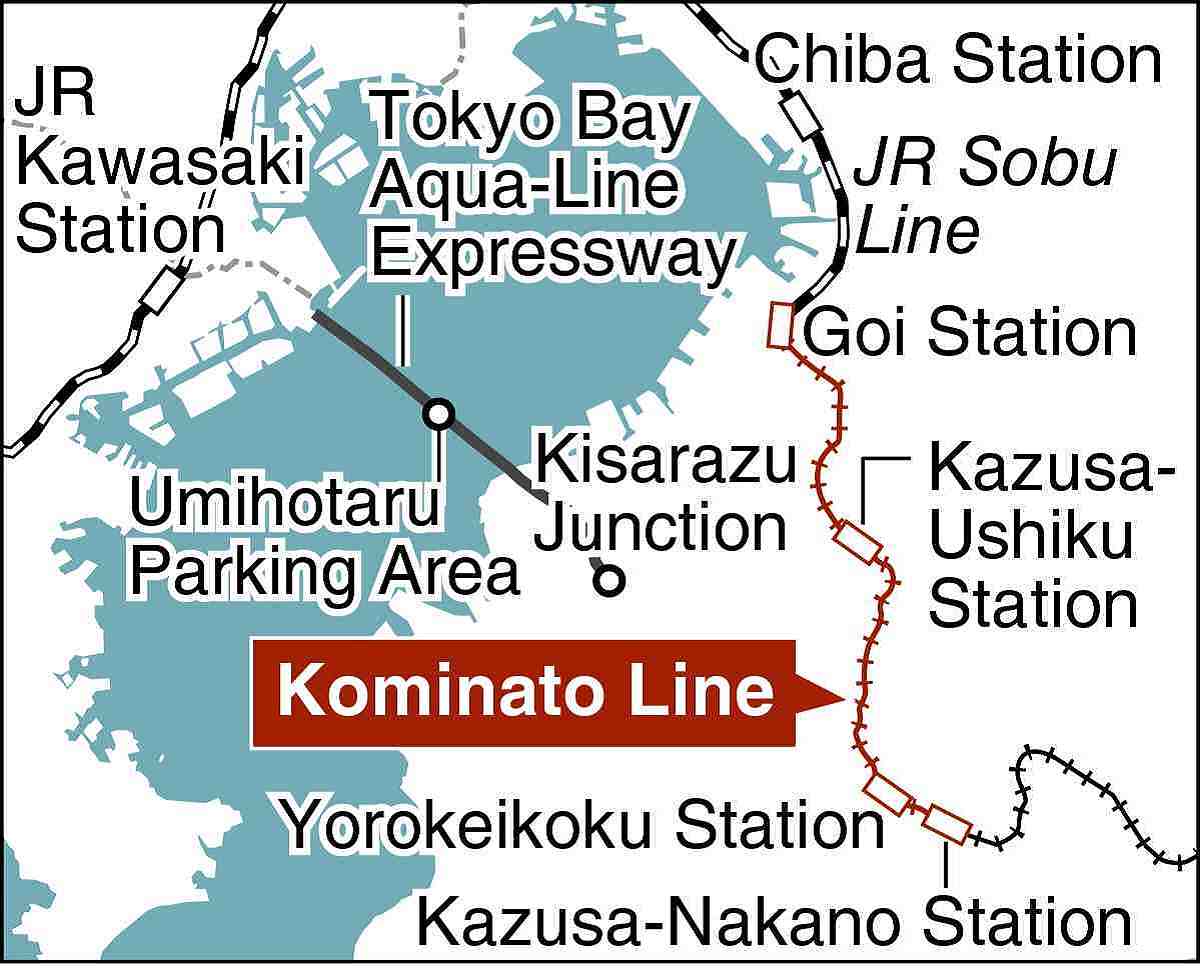In Chiba Pref., Old-Fashioned Train Rides Bring Nostalgia; Kominato Line Trains Still Operate As They Did Long Ago

Kunio Nagakura, right, the stationmaster of Kazusa-Ushiku Station, receives a ring-shaped pass called a “tablet” from the driver of a Kominato Line train that has arrived at the station.
13:48 JST, June 17, 2024
“I can still see it, right before my eyes: a Kominato Line train rolling, clickety-clack, through the countryside.”
These words were written by a nostalgic woman from Ichihara, Chiba Prefecture, in a letter to The Yomiuri Shimbun. Reading her letter inspired me to go for a ride on a train operated by Kominato Railway.

A paddy with freshly planted rice seedlings is seen from the window of a Kominato Line train.
On a peaceful, cloudy morning, a green-painted train, the first of the day, departs Goi Station in Ichihara, Chiba Prefecture. As I sit on one of the traditional face-to-face seats for four, I look out the window at a rice planting machine going back and forth through a paddy. Pheasants and their chicks huddle together in the flooded field, full of newly planted rice seedlings, and its surface reflects clouds and roofs of houses.
“One thing that’s attractive about it is that it’s fairly close to central Tokyo, but it’s rich in nature. Visitors can enjoy admiring hydrangea blooming along the tracks and watching fireflies flying around,” says Hiroya Hashimoto, 27, a conductor of Kominato Line trains. He is a self-proclaimed train buff who quit his job in a different industry and started working for the railway company in April last year. Thirteen of the Kominato Line’s 18 stations are unmanned, so it is the conductor’s job to get off and collect tickets from passengers on the platform every time the train arrives at an unmanned station. While the train is running, the conductor carries a large kiss-lock wallet and walks through the train to help passengers who want to buy tickets.

A conductor receives a ticket from a passenger at one of many unmanned stations on the Kominato Line.
The train takes about 30 minutes to arrive at Kazusa-Ushiku Station. The station building built during the Taisho era (1912-26) is one of the 22 structures on the Kominato Railway that were designated as tangible cultural properties by the government in 2017, the year the company turned 100 years old. When the two-tone red and cream-colored cars, so beloved by fans, come to a stop at the platform, the stationmaster, Kunio Nagakura, 75, walks to the driver’s cab and receives a ring-shaped object from the driver. It is a kind of pass, which they call the “tablet.”
The leather-covered metal ring measures about 30 centimeters in diameter. It is worn down enough that it has had to be reinforced with fabric. There are two sections where the Kominato Line is only a single track. So in order to avoid collision, a train is only allowed to pass through these sections if the driver is carrying the tablet. Kominato is among the very few rail lines which still use this kind of pass system, alongside Nagaragawa Railway in Gifu Prefecture and Tsugaru Railway in Aomori Prefecture.
As the train begins moving, the conductor calls out to Nagakura from the rear of the train: “Great work!” The stationmaster, who began overseeing the operation of Kominato Line trains when he was 20 and has been doing it for 55 years, continues with the pointing and calling procedures until the train vanishes from sight.

Steam engines preserved at Goi Station
Kominato Railway

Kominato Railway, the operating company of Kominato Line trains, was established in 1917. Next year, it will celebrate the centenary of its train services, which started in 1925. Service for the entire 39.1-kilometer stretch from Goi Station to Kazusa-Nakano Station began in 1928. The company initially planned to extend the route to Kominato in the city of Kamogawa (also in Chiba Prefecture), which is why that name is used in the name of the company.
"Features" POPULAR ARTICLE
-

Sanrio to Open Museum in Yamanashi Pref. Dedicated to Founder, Exhibits Include Hello Kitty, Other Characters
-

Autumn Foliage Surrounds Visitors to Tokyo’s Showa Kinen Park
-

My Daughter No Longer Speaks to Me, But I Want to See Her and My Grandchild
-

Kumamoto: Public Bath Refurbished as Library Where You Can Chat, Take Photos
-

Frozen Vegetables: Demand Rises for Convenient, Tasty Domestic Produce
JN ACCESS RANKING
-

Tokyo Economic Security Forum to Hold Inaugural Meeting Amid Tense Global Environment
-

Keidanren Chairman Yoshinobu Tsutsui Visits Kashiwazaki-Kariwa Nuclear Power Plant; Inspects New Emergency Safety System
-

Imports of Rare Earths from China Facing Delays, May Be Caused by Deterioration of Japan-China Relations
-

University of Tokyo Professor Discusses Japanese Economic Security in Interview Ahead of Forum
-

Japan Pulls out of Vietnam Nuclear Project, Complicating Hanoi’s Power Plans

























